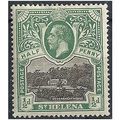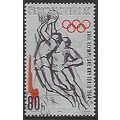Pre-paid postcard - 'Buzby' - Post office new phone number 1977 unused
- Condition : Used
- Dispatch : 2 Days
- Brand : None
- ID# : 203505602
- Quantity : 1 item
- Views : 107
- Location : United Kingdom

- Seller : justthebook (+1704)
- Barcode : None
- Start : Thu 29 Jul 2021 05:42:17 (EDT)
- Close : Run Until Sold
- Remain : Run Until Sold
Checks/Cheques
 for 1 item(s) edit
for 1 item(s) edit
Shipping Calculator
More Listings from This Seller view all
Seller's Description
- Postcard
- Picture / Image: Chien du St. Bernard [St. Bernard dog]
- Publisher: Jullien freres, Geneve
- Postally used: no
- Stamp: n/a
- Postmark(s): n/a
- Sent to: n/a
- Notes / condition:
Please ask if you need any other information and I will do the best I can to answer.
Image may be low res for illustrative purposes - if you need a higher definition image then please contact me and I may be able to send one. No cards have been trimmed (unless stated).
------------------------------------------------
Postage & Packing:
Postage and packing charge should be showing for your location (contact if not sure).
No additional charges for more than one postcard. You can buy as many postcards from me as you like and you will just pay the fee above once. Please wait for combined invoice. (If buying postcards with other things such as books, please contact or wait for invoice before paying).
Payment Methods:
UK - PayPal, Cheque (from UK bank) or postal order
Outside UK: PayPal ONLY (unless otherwise stated) please. NO non-UK currency checks or money orders (sorry).
NOTE: All postcards are sent in brand new stiffened envelopes which I have bought for the task. These are specially made to protect postcards and you may be able to re-use them. In addition there are other costs to sending so the above charge is not just for the stamp!
I will give a full refund if you are not fully satisfied with the postcard.
----------------------------------------------
Text from the free encyclopedia WIKIPEDIA may appear below to give a little background information (internal links may not work) :
*************
The St. Bernard or St Bernard (UK: /ˈbɜːnəd/, US: /bərˈnɑːrd/) is a breed of very large working dog from the western Alps in Italy and Switzerland.[3] They were originally bred for rescue work by the hospice of the Great St Bernard Pass on the Italian-Swiss border.[4][5] The hospice, built by and named after Italian monk Bernard of Menthon, acquired its first dogs between 1660 and 1670.[4] The breed has become famous through tales of alpine rescues, as well as for its large size.
The St. Bernard is a giant dog. The weight of the breed is between 65 and 120 kg (140 and 260 lb) or more, and the approximate height at the withers is 70 to 90 cm (28 to 35 in).[6]
The coat can be either smooth or rough; the smooth coat being close and flat while the rough is dense, flat, and more profuse around the neck and legs. The colour is typically a red shade with white, or a mahogany brindle with white. Black shading is usually found on the face and ears.
The tail is long and heavy, hanging high.
Eyes are usually brown, but sometimes can be icy blue, and should have naturally tight lids, with haws only slightly visible.
The ancestors of the St. Bernard share a history with the Sennenhunds. The St. Bernard, also called Alpine Mountain Dogs or Alpine Cattle Dogs, are the large farm dogs of the farmers and dairymen of most notably the French Alps, livestock guardians, herding dogs, and draft dogs as well as hunting dogs, search and rescue dogs, and watchdogs. These dogs are thought to be descendants of molosser type dogs brought into the Alps by the ancient Romans, and the St. Bernard is recognized internationally today as one of the Molossoid breeds.[7]
The earliest written records of the St. Bernard breed are from monks at the Great St Bernard Hospice at the Great St. Bernard Pass in 1707, with paintings and drawings of the dog dating even earlier.[8] The first evidence that the dogs were in use at the monastery is in two paintings dating to 1690 by Italian artist Salvator Rosa. The most famous St. Bernard to save people at the pass was Barry (sometimes spelled Berry), who reportedly saved somewhere between 40 and 100 lives. There is a monument to Barry in the Cimetière des Chiens, and his body was preserved in the Natural History Museum in Berne.[9] Another famous dog was Rutor, the faithful companion of the Italian priest Pierre Chanoux, who was named after the peak Tête du Rutor located above the Little St Bernard pass. The classic St. Bernard looked very different from the St. Bernard of today because of cross-breeding. Severe winters from 1816 to 1818 led to increased numbers of avalanches, killing many of the dogs used for breeding while they were performing rescues.[10][11] In an attempt to preserve the breed, the remaining St. Bernards were crossed with Newfoundlands brought from the Colony of Newfoundland in the 1850s, and so lost much of their use as rescue dogs in the snowy climate of the alps because the long fur they inherited would freeze and weigh them down.[12]
The dogs never received any special training from the monks. Instead, younger dogs would learn how to perform search and rescue operations from older dogs.[13]
The Swiss St. Bernard Club was founded in Basel on 15 March 1884. The St. Bernard was the very first breed entered into the Swiss Stud Book in 1884, and the breed standard was finally approved in 1888. Since then, the breed has been a Swiss national dog.[8]
The dogs at the St Bernard hospice were working dogs that were smaller than today's show St Bernard's dogs. Originally about the size of a German Shepherd Dog,[14] the St Bernard grew to the size of today's dog as kennel clubs and dog shows emphasized appearance over the dog's working ability, along with a closed stud book.[15]
An open stud book would have allowed breeders to correct such errors by breeding in working dogs of other dog breeds.
Listing Information
| Listing Type | Gallery Listing |
| Listing ID# | 203505602 |
| Start Time | Thu 29 Jul 2021 05:42:17 (EDT) |
| Close Time | Run Until Sold |
| Starting Bid | Fixed Price (no bidding) |
| Item Condition | Used |
| Bids | 0 |
| Views | 107 |
| Dispatch Time | 2 Days |
| Quantity | 1 |
| Location | United Kingdom |
| Auto Extend | No |



















